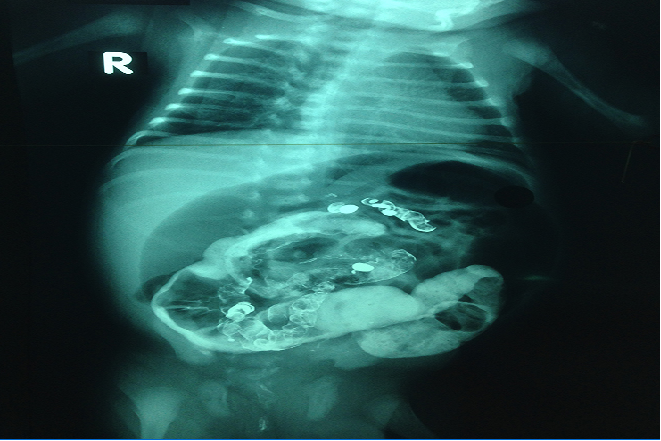Introduction: Intestinal obstruction in children is a serious medical condition that requires immediate attention. It occurs when there is a blockage in the small or large intestine, hindering the passage of food, fluids, and gas. Parents play a crucial role in recognizing the signs of intestinal obstruction early on to ensure prompt medical intervention. In this article, we will explore the signs of intestinal obstruction in children and why it’s essential for parents to be aware of them.

1. Abdominal Pain: Severe and persistent abdominal pain, especially around the belly button or in the lower abdomen, is a common and prominent symptom of intestinal obstruction in children.
2. Vomiting: Frequent and forceful vomiting that may contain bile or undigested food is another significant indicator. Children with intestinal obstruction may vomit repeatedly and without relief.
3. Distended Abdomen: An abdominal swelling or distension is often observed in children with intestinal obstruction. The abdomen may appear swollen, tense, and firm to the touch.
4. Constipation: A sudden onset of severe constipation, accompanied by the inability to pass gas, is a concerning sign. Children may have difficulty with bowel movements.
5. Diarrhea: In some cases, the stool may be liquid and pass around the obstruction, causing diarrhea. This can be misleading, as diarrhea may not rule out the possibility of intestinal obstruction.
6. Poor Appetite: Children with intestinal obstruction may lose their appetite and show disinterest in eating. They may also become irritable and fussy.
7. Dehydration: Persistent vomiting and decreased fluid intake can lead to dehydration. Signs of dehydration include dry mouth, sunken eyes, and decreased urination.
8. Lethargy: Children affected by intestinal obstruction may become lethargic, weak, and fatigued due to discomfort and dehydration.
9. High-Pitched Crying: In infants, a high-pitched cry may indicate distress caused by abdominal pain.
10. Fever: While not always present, fever can develop as a result of infection or inflammation caused by the obstruction.

11. Visible Peristalsis: In some cases, you may notice visible peristalsis, which is the wave-like movement of the intestines beneath the skin. This can be a sign of an underlying issue.
12. Change in Bowel Sounds: Listening for bowel sounds with a stethoscope can help detect changes. Increased or hyperactive bowel sounds may be indicative of obstruction.

Conclusion: Parents should be vigilant in recognizing the signs of intestinal obstruction in children, as early intervention is crucial for a successful outcome. If you suspect your child may be experiencing intestinal obstruction based on these signs, seek immediate medical attention. A healthcare professional can perform diagnostic tests, such as X-rays or ultrasounds, to confirm the diagnosis and recommend appropriate treatment, which may include surgery to remove the obstruction. Swift action can help prevent complications and ensure the well-being of your child.


